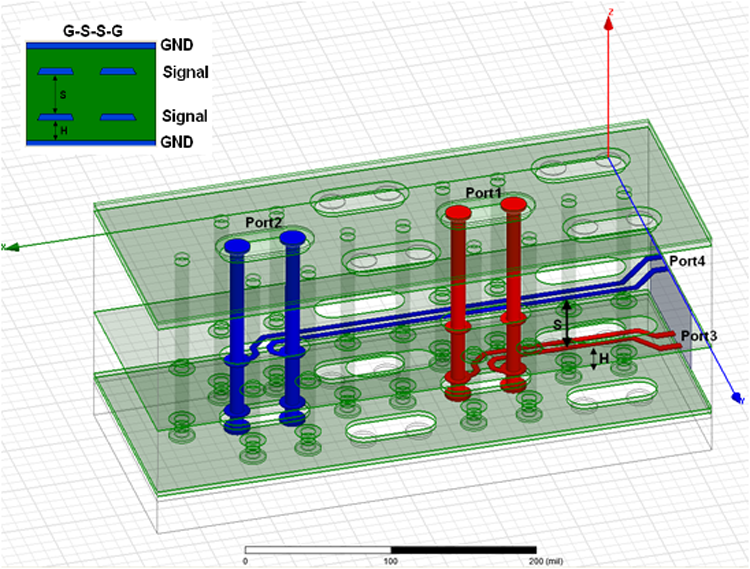Visible to Intel only — GUID: nik1412632477500
Ixiasoft
1.3.4. Broadside Coupling
For differential pair traces routed on adjacent signal layers, broadside coupling is much stronger if there is any overlapping of traces. This problem usually occurs under the congested BGA area where routing is constrained.

Simply increasing the vertical separation of broadside coupled traces is not practical because the required vertical separation (S) would need to be 10H for 1% coupling. This causes board thickness to quickly become unreasonable. Instead, broadside crosstalk minimization techniques should follow edge coupling rules by maintaining a 5H horizontal separation (D) between pairs on adjacent layer. For the congested BGA area, the suggested routing implementation helps to avoid trace overlap.

